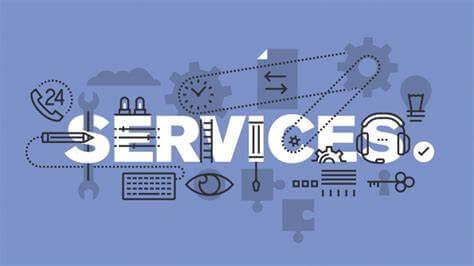Service SectorUnderstanding Service SectorThe service sector, according to the U.S. Census Bureau, includes a range of service industries, including health care and social assistance, arts, entertainment, and recreation, as well as warehousing and transportation services, information services, securities and other investment services, professional services, and waste management. Additionally, it creates unique services as opposed to real things. 
Economies primarily based on the service sector are regarded as more developed than industrial or agricultural economies. The service sector, often known as the tertiary sector, makes up the third tier of the three-sector economy. This industry produces maintenance, repair, training, or consultancy instead of products. However, Jobs in the service industry include education, nursing, housekeeping, and tours. Contrarily, those who work in the manufacturing or industrial sectors create physical products like clothing, equipment, and automobiles. Among the top countries that place a strong focus on the service sector are the United States, the United Kingdom, Australia, and China. The Institute for Supply Management (ISM) in the United States releases a monthly index that details the state of the service sector's overall economic activity. This index generally serves as a barometer of the state of the US economy because the service sector makes up about two-thirds of all economic activity in the country. Principal Economic Sectors1. Primary SectorIndustries involved in obtaining raw materials make up the primary sector. For instance, the agriculture and fishing sectors. The agricultural and fishing sectors also include mining, timber, and oil drilling firms. 2. Secondary SectorThe secondary sector includes all businesses that produce and sell items, including automakers, furniture stores, and clothing merchants. 3. Tertiary SectorThe service sector of an economy typically makes up the tertiary sector, which may consist of the provision of services instead of end products. It covers sectors like the financial services sector, I.T. sector, healthcare sector, and entertainment sector. Research, information technology, education, consulting, and other elements of what is known today as the "knowledge-based economy" are classified by some economists as the fourth sector or quaternary sector. The knowledge-based economy is centred on exploiting information and communications (like social media) to produce goods and services that are suited to the requirements and wishes of individual consumers or clients. Economic ProgressAccording to the tri-sector economic theory, the three economic sectors distinguish between various economic activities and show how economies change through time. Most economic activity in ancient economies is dedicated to producing raw materials, agriculture, and fishing. As countries expand and develop, the manufacture and sale of finished goods make up most economic activity. The final economic sector to see considerable expansion is the service sector, which characterises mature economies and developed countries. The Importance of the Service IndustryThe fact that the service industry is classified as the tertiary sector should under no circumstances be interpreted as indicating that it comes in third in terms of economic significance. The service industry has quickly grown during the last century. By the start of the twenty-first century, it had eclipsed the manufacturing and retail goods sectors as the largest economic sector in the majority of industrialised nations. Unlike in the early 20th century, when the United States' enormous manufacturing industry helped it become the world's leading economy, its global economic supremacy in the early 21st century was founded on its equally sizable service industry. The service sector in the United States expanded from contributing less than 50% of the country's gross domestic product (GDP) in 1919 to around 85% of the GDP in 2019. 
Rapid technological advances over the past 50 to 70 years, the exponential growth of information, and the advent of instant, worldwide communication via mobile phones and Internet connections have fueled the growth of the service sector. The increase in automation, which reduces the number of humans required for industrial activities, is critical to the shift from a manufacturing-based economy to a service-based economy. The massive expansion of governmental services in industrialised nations is another crucial factor that greatly contributes to the rising dominance of the service sector. Service Industry ExamplesMany individuals are unaware of the vast array of companies and sectors that make up the service industry. However, if you pause and consider all the many service-related businesses, it is quite clear why the service sector is, by far, the greatest component of the economy in industrialised nations like the U.S., the UK, Canada, Australia, Germany, and Japan. The following list includes only a small sampling of the numerous companies that comprise some of the main service-related sectors: 1. Travel SectorThe travel industry includes more than just the locations of specific airlines and travel agencies. It also includes the rapidly growing field of public transportation, which includes city buses and subways. Significant businesses like Uber, Lyft, and Airbnb, which didn't even exist 20 years ago, are still part of the travel sector. In addition to the tens of thousands of regional tourist attractions spread around the country, the tourism sector also comprises a wide variety of tourist attractions, such as museums, theme parks, national parks, Yellowstone, the Grand Canyon, music halls, and art galleries. The hospitality sector, including hotels and motels, is also included in the travel and tourism sector. 2. Industry of Information TechnologyThe I.T. sector encompasses everything that has to do with computers, technology, electronic communication, and software, except the production of essential hardware like computers. Examples from the IT industry are millions of businesses on social media platforms such as Facebook, Twitter, Instagram and YouTube. As of 2019, there were more than 30 million YouTube channels hosted in the United States. One of the global industries with the fastest growth rates is online education, which is also included in the broad definition of the information technology sector. 3. Entertainment and Media SectorThe media and entertainment sector has experienced a significant increase due to technological breakthroughs and advancements. In the past, the primary means of news delivery included radio stations, print newspapers, and network television. There are now many news stations thanks to the development of satellite and cable television. For instance, Fox, CNN, and NBC have distinct business news channels and offer 24-hour news programming. In addition, there are too many news and informational websites online to navigate. Every year, many more "made-for-television" or OTT films are being made than are movies made by any of the big motion picture studios or production groups combined. On their Xbox or PlayStation, people can spend their entire day playing video games, or they can watch online entertainment on websites like YouTube or Pinterest. 4. EducationThe education sector consists of for-profit, non-profit, and public organisations that work to improve the nation's human capital. Every company needs a sizeable share of qualified labour, and the education sector offers the conditions for developing a variety of professional human resources. |
 For Videos Join Our Youtube Channel: Join Now
For Videos Join Our Youtube Channel: Join Now
Feedback
- Send your Feedback to [email protected]
Help Others, Please Share










